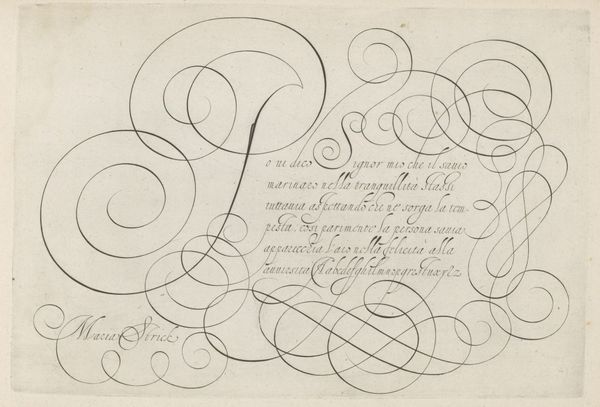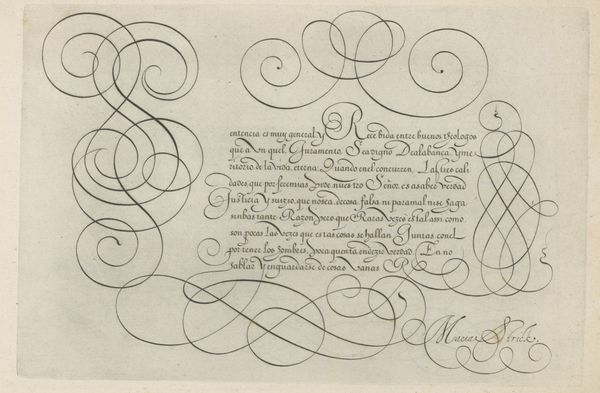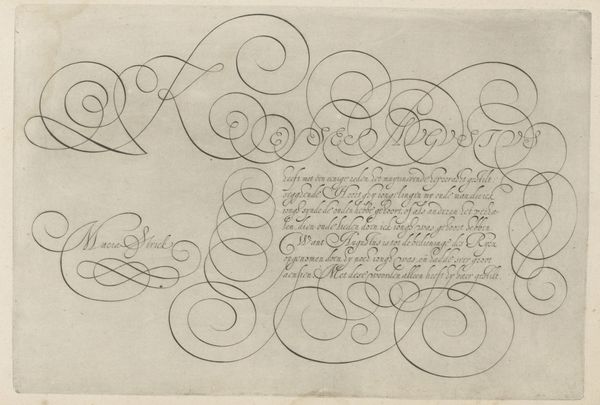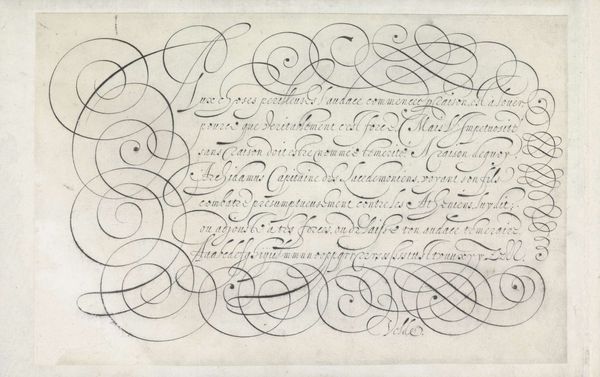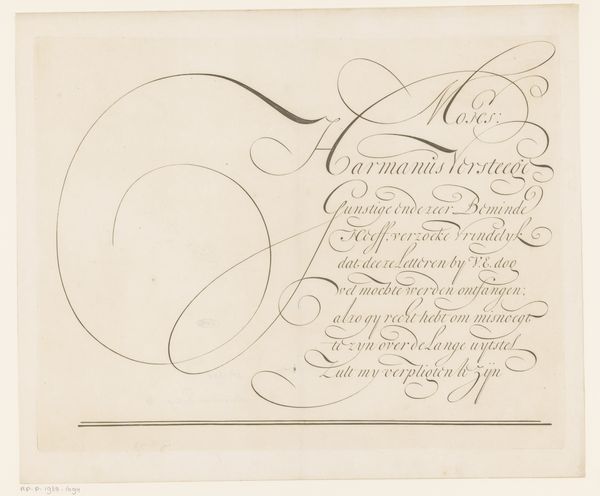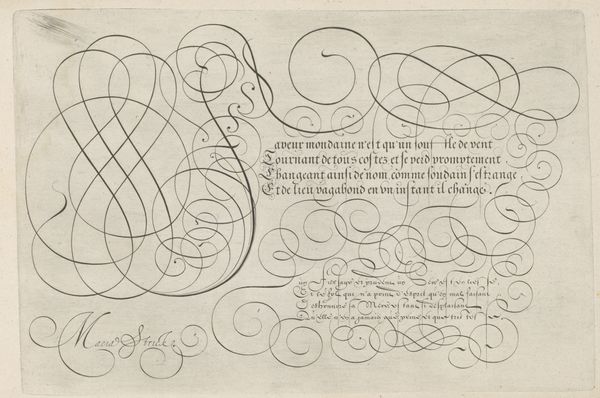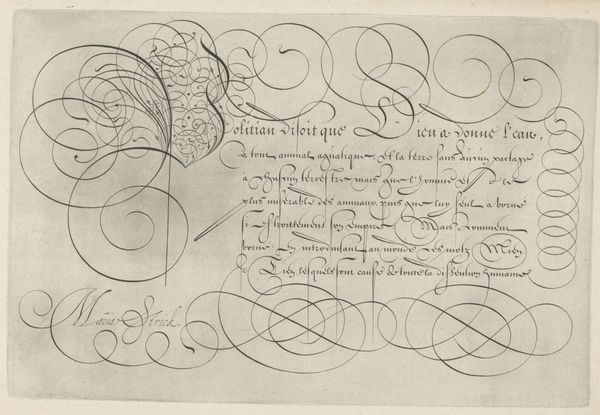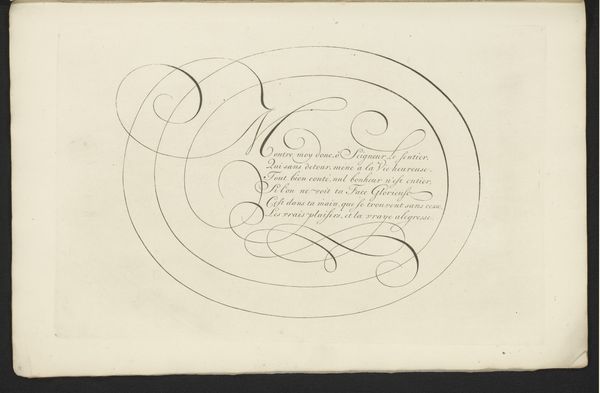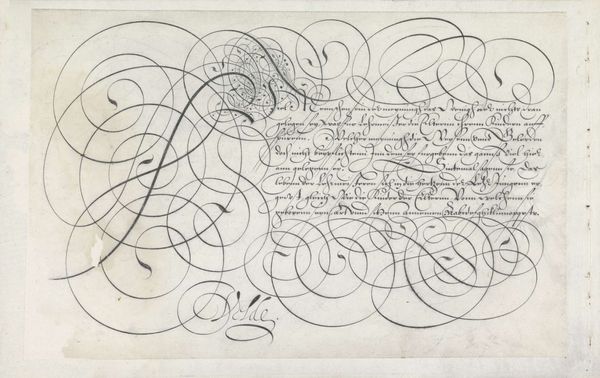
drawing, paper, ink, pen
#
drawing
#
type repetition
#
aged paper
#
script typography
#
hand-lettering
#
baroque
#
old engraving style
#
hand drawn type
#
hand lettering
#
paper
#
personal sketchbook
#
ink
#
hand-drawn typeface
#
pen
#
golden font
#
decorative-art
#
calligraphy
Dimensions: height 200 mm, width 297 mm
Copyright: Rijks Museum: Open Domain
This calligraphic writing sample was created by Hans Strick, likely in the Netherlands during the late 16th or early 17th century. As a master penman, Strick was working within a well-established tradition of producing exemplary scripts, meant both to showcase skill and to serve as models for students. But calligraphy in this period was never simply about neatness or legibility. Instead, it was a highly codified visual language, one that signaled social status, education, and even moral character. The elaborate flourishes and carefully controlled lines here, far exceeding the demands of mere communication, speak to the cultural importance attached to handwriting. Understanding the social role of such images requires us to look beyond aesthetics alone. By studying writing manuals, archival documents related to education, and even the history of printing, we can begin to grasp the complex interplay between art, skill, and social hierarchy in the early modern period.
Comments
No comments
Be the first to comment and join the conversation on the ultimate creative platform.
